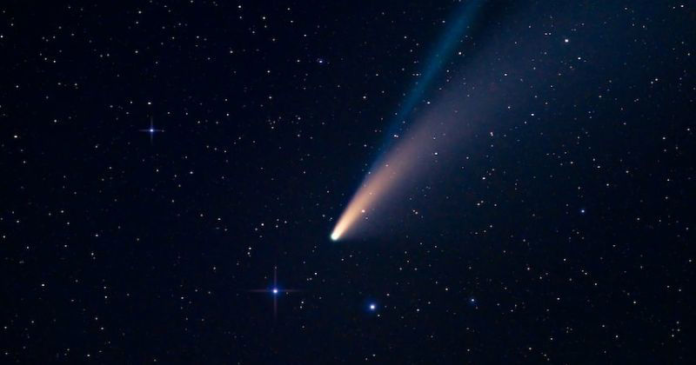
For the first time in 50,000 years, a bright green comet will pass by Earth’s outer space. It is expected that the comet, which is officially known as C/2022 E3 (ZTF) will make close approach to the sun on March 20, and its brightness may be bright enough to be able to be observed using binoculars and a telescope. NASA states that since this cosmic intrusion has been moving though the inner solar system, it has steadily been brightening, which implies that people should be able to catch a glimpse of it if they look up at the night sky.
A comet can be difficult to spot in the night sky, which means amateur skywatchers may have a good chance to see it in the early morning sky on Thursday, sometime after midnight but before the sun rises.
A team of astronomers has been monitoring the comet as it approaches, and according to EarthSky, a website dedicated to skywatching and astronomy, celestial observers in the Northern Hemisphere should stake out a location and gaze low on the horizon in the northeastern sky.
A flimsy green glow can be seen travelling northwestward on the comet with binoculars as it travels across the sky. Using telescopes, we should be able to spy the “green comet” more precisely and we should be able to see some finer features of the comet and perhaps even its flimsy tail through telescopes. To observers in the Northern Hemisphere without a telescope, the comet will appear like a “faint, greenish smudge in the sky”, while those with a telescope could see the comet’s dramatic visible tail, the Planetary Society said.
For most of the rest of the month, skywatchers should be able to see the comet. The icy object will then come as close to Earth as it can on February 2, according to NASA officials. The Planetary Society estimates that the comet will be around 26 million miles away from Earth at that time.


